Introduction
Welcome to a guide on how to prepare effectively for a cricket match. Cricket is a sport that demands not only physical fitness but also mental focus and strategic planning. Whether you’re a seasoned player or a beginner, the steps outlined in this article will help you get ready for the big game. In the following sections, we’ll cover physical and mental preparation, essential gear and equipment, team coordination, game strategy, nutrition, hydration, and pre-match rituals. Let’s dive in!
1. Physical Preparation
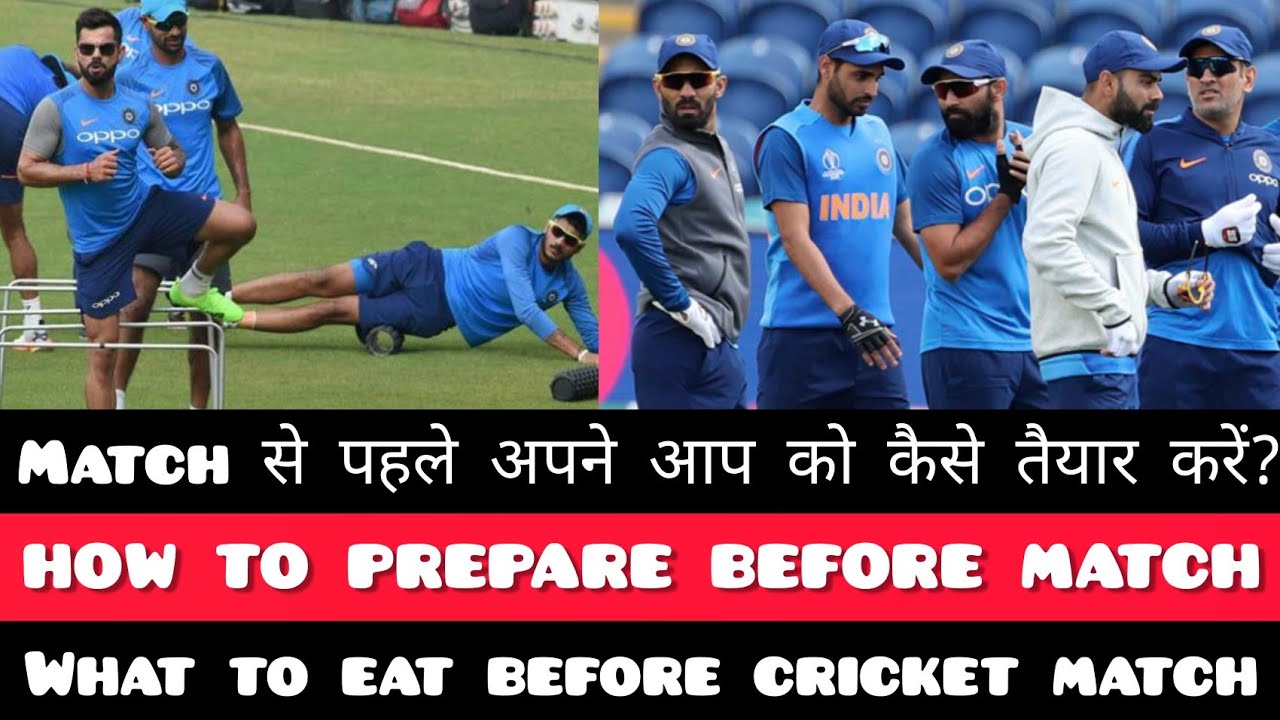
Physical fitness is a cornerstone of cricket performance. To excel on the field, you must be in top shape. Here’s how you can prepare physically for a cricket match:
1.1. Cardiovascular Conditioning
Cricket is an endurance sport, and a strong cardiovascular system is essential. Engage in regular cardio exercises like running, cycling, or swimming to improve your stamina. Aim for at least 30 minutes of moderate-intensity cardio workouts, five days a week.
1.2. Strength Training
Building muscle strength is crucial for power hitting and delivering fast-paced bowling. Include strength training exercises in your regimen, focusing on your legs, core, and upper body. Squats, deadlifts, and bench presses are effective options.
1.3. Agility and Flexibility
Cricket requires quick movements and agility in the field. Incorporate agility drills and stretching exercises into your routine. Yoga or Pilates can help enhance flexibility, reducing the risk of injuries.
1.4. Endurance Workouts
Long-duration practices mimic the demands of a cricket match. Spend time on the field running laps, fielding, and batting to improve your endurance. This will help you stay sharp throughout the game.
1.5. Rest and Recovery
Don’t overlook the importance of rest. Adequate sleep and recovery are vital for muscle repair and overall well-being. Ensure you get 7-8 hours of quality sleep each night, especially in the days leading up to the match.
1.6. Hydration and Nutrition
Proper nutrition is the fuel your body needs. Consume a balanced diet rich in carbohydrates, proteins, and healthy fats. Stay hydrated by drinking plenty of water and electrolyte-rich fluids, especially in hot weather.
1.7. Injury Prevention
Protect yourself from injuries by wearing appropriate safety gear like helmets, pads, and gloves. Warm up before practice and matches to loosen your muscles and reduce the risk of strains.
1.8. Game-Specific Training
Lastly, simulate match conditions during practice. Bowl and bat with the same intensity you would in a real game. This will help you adapt to the pressure and intensity of match situations.
Remember, physical preparation is an ongoing process. Consistency in your training routine is key to becoming a better cricketer. Combine these physical aspects with mental preparation, and you’ll be well on your way to success on the cricket field.
2. Mental Preparation
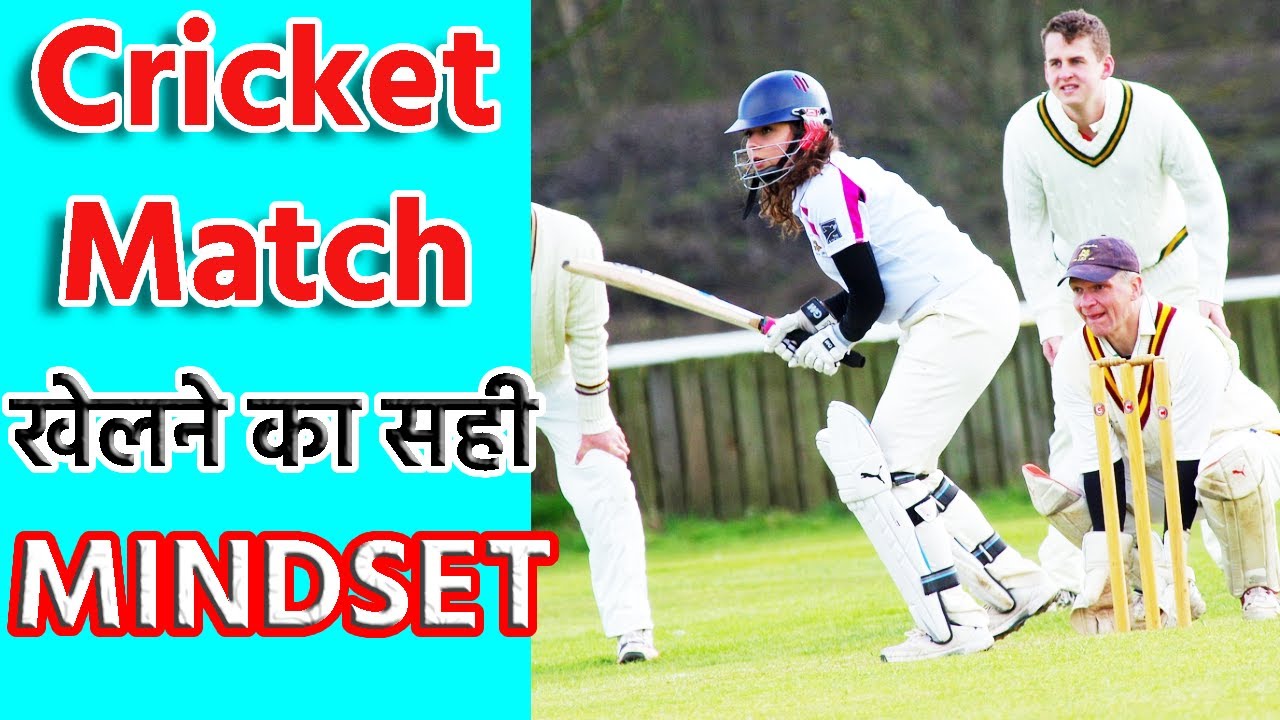
Mental preparation is often underestimated in cricket, but it can significantly impact your performance. Here’s how to strengthen your mental game:
2.1. Visualization Techniques
Visualization is a powerful tool. Before the match, close your eyes and vividly imagine yourself making successful shots, taking crucial wickets, and fielding with precision. This mental rehearsal can boost your confidence and readiness.
2.2. Positive Self-Talk
Replace negative thoughts with positive self-talk. Instead of dwelling on mistakes or potential failures, focus on your strengths and past successes. Develop a repertoire of encouraging phrases to repeat to yourself during challenging moments.
2.3. Goal Setting
Set clear, achievable goals for the match. These could be related to your performance, like scoring a certain number of runs or taking wickets, or team-oriented goals, such as maintaining a high level of fielding energy. Goals provide motivation and direction.
2.4. Stress Management
Cricket can be intense, and anxiety is natural. Learn stress management techniques, like deep breathing and progressive muscle relaxation, to stay calm under pressure. Practice these methods during training to make them second nature.
2.5. Focus and Concentration
Develop your focus and concentration skills. In cricket, you must stay alert at all times. Train your mind to block out distractions and stay fully engaged in the game. Techniques like mindfulness meditation can help improve concentration.
2.6. Handling Pressure
Pressure situations are common in cricket. Prepare mentally by practicing high-pressure scenarios during training. This will help you become more resilient and capable of making sound decisions when the game is on the line.
2.7. Team Communication
Effective communication within the team is essential. Encourage open discussions, share insights, and support your teammates. A united and supportive team can boost everyone’s confidence and mental well-being.
2.8. Pre-Match Routine
Establish a pre-match routine that helps you get into the right mental state. This could include listening to calming music, practicing breathing exercises, or reviewing your game plan. Consistency in your routine can provide a sense of comfort and readiness.
2.9. Sports Psychology
Consider consulting a sports psychologist who specializes in cricket. They can provide tailored strategies to enhance your mental toughness and performance. Many professional cricketers utilize sports psychology to gain a competitive edge.
Remember, cricket is not just a physical game; it’s a mental one too. By incorporating these mental preparation techniques into your training regimen, you can boost your confidence, focus, and resilience, ultimately improving your performance on the cricket field.
3. Gear and Equipment
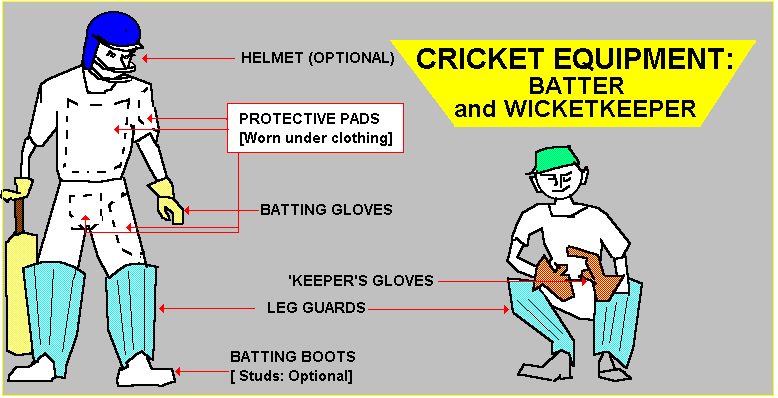
Having the right gear and equipment is crucial for both safety and performance in cricket. Here’s a detailed look at the essentials:
3.1. Bat
Your cricket bat is your primary tool. Choose one that suits your playing style and preferences. Bats come in various sizes and weights. Make sure it complies with the regulations set by the governing body of cricket.
3.2. Ball
The cricket ball is typically made of leather and should be in good condition. Inspect it for any damages or signs of wear. Fast bowlers often prefer harder balls, while spinners may opt for ones with more wear and tear.
3.3. Protective Gear
Protective gear is vital. This includes a helmet to safeguard your head, pads to protect your legs, and gloves for your hands. Quality protective gear ensures your safety while batting and fielding.
3.4. Footwear
Invest in proper cricket shoes with spikes or cleats to provide stability and grip on the field. Different shoes are designed for batting, bowling, and fielding, so choose accordingly.
3.5. Clothing
Wear comfortable cricket whites for a traditional look. Make sure the clothing is breathable and allows for easy movement. Also, consider wearing a cap or hat to shield your eyes from the sun.
3.6. Accessories
Carry accessories such as a kit bag to keep your gear organized, protective gear for the abdomen and thighs, and sunscreen to protect your skin during day games.
3.7. Stumps and Bails
If you’re playing a match, ensure that stumps and bails are in good condition. They are essential for both batting and bowling, and a damaged bail can affect the game.
3.8. Umpire’s Equipment
If you’re officiating, make sure you have the necessary umpire’s equipment such as a cricket ball counter, hat, and white coat or shirt to perform your duties effectively.
3.9. Equipment Maintenance
Regularly inspect and maintain your gear. Replace any damaged or worn-out items promptly. Clean your bat, oil it if necessary, and ensure that your protective gear is in good condition to provide optimal safety.
Having the right gear and equipment is not just about compliance; it’s about enhancing your performance and safety on the cricket field. Invest in high-quality gear, maintain it well, and you’ll be well-prepared for any match.
4. Team Coordination
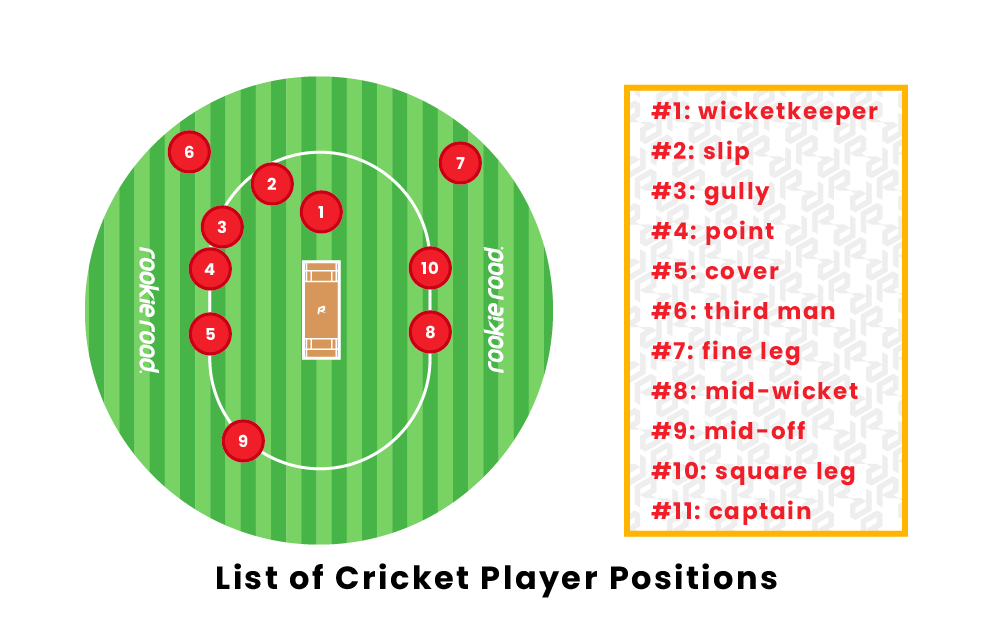
Team coordination is essential in cricket, a sport that relies heavily on teamwork and strategy. Here are key aspects to focus on to ensure effective team coordination:
4.1. Communication
Effective communication is the cornerstone of good team coordination. Players should have clear and concise ways of communicating on the field, whether it’s through vocal signals, hand gestures, or pre-established codes. This helps in quick decision-making and minimizes misunderstandings.
4.2. Field Placement
Develop a well-thought-out field placement strategy. Determine where each player should stand for different bowlers and batsmen. Having a plan for field placement based on the game situation can put pressure on the opposition.
4.3. Bowling Combinations
Discuss and decide on bowling combinations as a team. Analyze the strengths and weaknesses of each bowler and plan their spells accordingly. This ensures that bowlers complement each other and apply consistent pressure.
4.4. Batting Order
Set a batting order that suits your team’s strengths and the match situation. The order should balance aggressive and defensive players, with strong hitters coming in later to accelerate the run rate if needed.
4.5. Running Between Wickets
Practice running between wickets meticulously. Quick and smart running can turn singles into doubles and doubles into triples. Make sure every run is maximized, as this can have a significant impact on the final score.
4.6. Fielding Positions
Assign specific fielding positions to players based on their strengths and abilities. A good fielding setup can lead to wickets through catches or run-outs, so it’s crucial to have agile fielders in key positions.
4.7. Team Meetings
Hold regular team meetings to discuss strategies and assess the opposition. These meetings are a forum for players to share insights and suggestions, fostering a sense of involvement and unity.
4.8. Adaptability
Encourage adaptability in your team. Cricket is unpredictable, and plans may need to change quickly. Players should be prepared to adjust their strategies based on the evolving match situation.
4.9. Trust and Support
Build a strong sense of trust and support within the team. Players should have confidence in their teammates’ abilities and decisions. Support each other during both good and tough moments to maintain team morale.
Remember, cricket is a team sport, and effective team coordination can often make the difference between winning and losing. By focusing on these aspects, your team can improve its performance and become a formidable force on the field.
5. Game Strategy
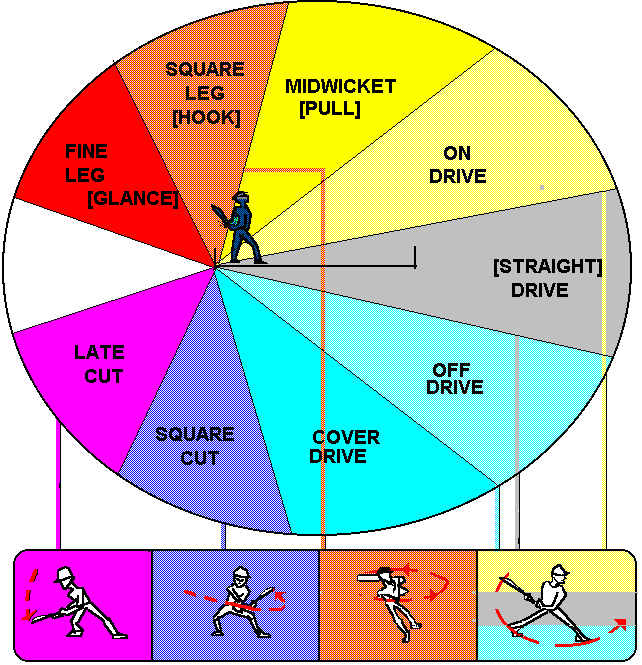
Developing a solid game strategy is pivotal to success in cricket. A well-thought-out approach can give your team a significant advantage. Here’s a comprehensive guide to cricket game strategy:
5.1. Pitch Assessment
Begin by assessing the pitch conditions. Is it a batting-friendly wicket or one that favors bowlers? Factors like grass cover, moisture, and cracks can influence your strategy. Consider the weather conditions as well, as they can affect the behavior of the ball.
5.2. Toss Decision
The toss can be crucial in cricket. Winning the toss allows you to choose whether to bat or bowl first. Your decision should be based on pitch conditions, team strengths, and your preferred strategy for that particular match.
5.3. Batting Strategy
If you’re batting first, set a target score based on the pitch and opposition. Ensure a strong start from your opening batsmen, and have a clear run rate strategy for each phase of the innings (powerplay, middle overs, and death overs).
5.4. Bowling Strategy
If you’re bowling first, determine your bowling line-up. Assign specific roles to your bowlers, such as taking wickets early or maintaining tight lines and lengths. Adapt your strategy based on the batsmen at the crease.
5.5. Fielding Strategy
Have a fielding strategy in place. Position fielders strategically to exploit the batsmen’s weaknesses. Use catching positions, close-in fielders, and boundary riders effectively to create pressure.
5.6. Review and Adjust
During the match, constantly review and adjust your strategy. Assess the opposition’s performance and make tactical changes accordingly. Be prepared to shuffle your batting order or adjust your field placements as needed.
5.7. Running Between Wickets
Emphasize quick running between the wickets to keep the scoreboard ticking. Rotate the strike and take advantage of any gaps in the field. Running pressure can force the opposition into making mistakes.
5.8. Bowling Variations
Encourage your bowlers to use a variety of bowling variations. Deliver yorkers, bouncers, slower balls, and spin variations to keep the batsmen guessing and disrupt their rhythm.
5.9. Adaptability
Stay adaptable. Cricket is a dynamic game, and the situation can change rapidly. Be ready to modify your strategy based on the evolving match conditions.
5.10. Team Morale
Finally, maintain high team morale. A positive and motivated team can overcome challenges and execute the game strategy effectively. Support each other and stay focused on the end goal.
Cricket strategy is a combination of science and art. It requires astute analysis, decision-making, and the ability to adapt to changing circumstances. By mastering these aspects, your team can become a formidable force on the cricket field.
6. Nutrition and Hydration
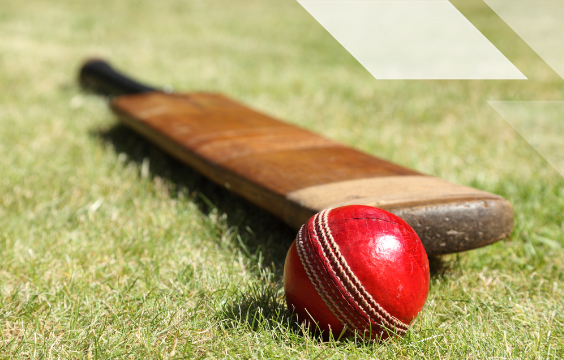
Nutrition and hydration play a crucial role in a cricketer’s performance and stamina on the field. Here’s a comprehensive guide to fueling your body for cricket:
6.1. Balanced Diet
A balanced diet is the foundation of good nutrition. Include a variety of foods from all food groups, including carbohydrates, proteins, fats, vitamins, and minerals. These nutrients provide energy and support overall health.
6.2. Carbohydrates
Carbohydrates are your primary source of energy. Consume complex carbohydrates like whole grains, rice, pasta, and oats. They provide sustained energy throughout the game.
6.3. Proteins
Proteins are essential for muscle repair and growth. Include lean sources of protein like chicken, fish, lean meats, beans, and legumes in your diet. Protein intake aids in recovery after matches and training sessions.
6.4. Fats
Healthy fats support brain function and provide long-lasting energy. Incorporate sources like avocados, nuts, seeds, and olive oil into your meals.
6.5. Hydration
Proper hydration is vital to prevent cramps and fatigue. Drink water regularly, and consider sports drinks during matches to replace lost electrolytes. Monitor your urine color; light yellow is a sign of good hydration.
6.6. Pre-Match Meal
Consume a pre-match meal 2-3 hours before the game. It should be rich in carbohydrates and low in fat and fiber to aid digestion. Include foods like pasta, rice, or sandwiches with lean protein.
6.7. In-Game Nutrition
During the match, snack on easily digestible foods like energy bars, bananas, and sports gels. These provide quick energy without causing digestive discomfort.
6.8. Post-Match Recovery
After the match, focus on post-match recovery. Consume a meal or shake that combines carbohydrates and proteins to replenish energy and aid muscle repair.
6.9. Supplements
Consult a sports nutritionist before considering supplements. While some athletes benefit from supplements like protein shakes or electrolyte tablets, it’s essential to ensure they’re safe and necessary for your specific needs.
6.10. Avoid Overeating
Avoid overeating before or during a match, as it can lead to discomfort and sluggishness. Stick to small, frequent meals and snacks to maintain energy levels without feeling bloated.
Remember, nutrition and hydration are ongoing processes. Make good eating habits a part of your lifestyle, and tailor your diet to match your training and match schedules. By fueling your body effectively, you’ll have the energy and endurance to excel in cricket.
7. Pre-Match Rituals
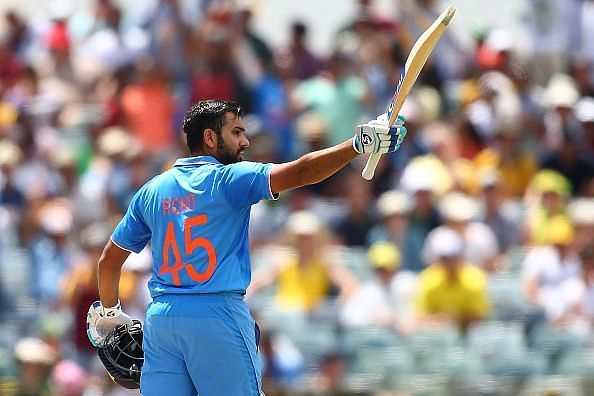
Pre-match rituals are a way for cricket players to mentally prepare and build focus before stepping onto the field. These routines can provide a sense of comfort and confidence. Here’s a look at some common pre-match rituals:
7.1. Visualizing Success
Visualization is a powerful ritual. Close your eyes and visualize yourself performing well on the field. See yourself making runs, taking wickets, and fielding effectively. Visualization can boost your confidence and create a positive mindset.
7.2. Bat Knocking
Many batsmen have the ritual of knocking their bat on the ground or the crease before facing their first delivery. This can help them feel more connected to their bat and mentally prepared for their innings.
7.3. Deep Breathing
Deep breathing exercises can calm nerves and improve focus. Take a few moments to practice deep breathing, inhaling slowly through your nose and exhaling through your mouth. This ritual can help reduce anxiety.
7.4. Quiet Reflection
Some players prefer a moment of quiet reflection to gather their thoughts. Find a quiet spot, close your eyes, and focus on your breathing. Use this time to clear your mind and concentrate on the game ahead.
7.5. Team Chants and Huddles
Team chants and huddles can build camaraderie and pump up the team’s energy. Gather with your teammates for a motivating chant or huddle to boost team spirit before taking the field.
7.6. Batting or Bowling Specific Warm-Ups
Some players have specific warm-up routines tailored to their roles. Batsmen might focus on playing straight drives and defensive shots, while bowlers may work on their run-up and delivery action to find their rhythm.
7.7. Music and Headphones
Listening to music on headphones is a popular ritual. Choose songs that energize and motivate you. Music can help you get into the right mindset and drown out distractions.
7.8. Personal Lucky Charms
Many cricketers have personal lucky charms they carry with them. It could be a wristband, a necklace, or even a specific pair of socks. These items can provide a sense of comfort and confidence.
7.9. Team Talk and Pep Talks
A team talk or pep talk from the captain or coach is a ritual that can boost team morale. It serves as a reminder of the team’s goals and the importance of working together.
Your pre-match rituals are personal and unique to you. They should help you focus, calm your nerves, and put you in the right mental state to perform at your best. Experiment with different rituals to find what works best for you and incorporate them into your cricket routine.
FAQ
Here are some frequently asked questions about preparing for a cricket match:
1. How early should I arrive at the cricket ground before a match?
It’s advisable to arrive at least 1-2 hours before the scheduled start of the match. This allows time for warm-up exercises, team meetings, and getting accustomed to the conditions.
2. What should I eat before a cricket match?
Consume a balanced meal 2-3 hours before the game. Include carbohydrates for energy, lean proteins for muscle repair, and some healthy fats. Avoid heavy or greasy foods that can lead to discomfort.
3. How do I stay focused during a long day of cricket?
Staying focused during long matches requires mental discipline. Practice mindfulness techniques and use visualization to stay in the moment. Stay hydrated and take short breaks when necessary to recharge.
4. What kind of warm-up exercises should I do?
Your warm-up should include stretching, light jogging, and sport-specific drills. For cricket, focus on batting, bowling, and fielding drills to get your body and mind ready for the game.
5. Is it essential to have a pre-match ritual?
Pre-match rituals are a personal choice. Some players find them beneficial for mental preparation, while others don’t use them. Experiment with rituals to see if they help you perform better and stay focused.
6. Should I use energy drinks or supplements before a match?
Energy drinks and supplements should be used cautiously and preferably under the guidance of a sports nutritionist. Hydration and balanced nutrition are usually sufficient to sustain energy levels during a cricket match.
7. How can I improve my fielding skills before a match?
Fielding drills and practice are key. Work on your agility, reflexes, and throwing accuracy. Focus on catching under different conditions, such as high catches, ground fielding, and slip fielding.
8. What should I do if I’m nervous before a cricket match?
Nervousness is common. Practice relaxation techniques, deep breathing, and visualization to calm your nerves. Remember that a moderate amount of nervousness can enhance your performance.
9. How can I adapt my game strategy during a match?
Adaptability is crucial. Continuously assess the game situation, the opposition’s performance, and your team’s strengths. Be ready to make tactical changes in batting, bowling, and fielding strategies as needed.
10. What’s the best way to recover after a cricket match?
Post-match recovery should include hydration, stretching, and a meal rich in carbohydrates and proteins to aid muscle recovery. Rest and sleep are also essential for full recovery.
Conclusion
In conclusion, preparing for a cricket match requires a holistic approach that encompasses physical fitness, mental readiness, equipment, team coordination, game strategy, nutrition, and hydration. By diligently following the guidelines outlined in this article, you can enhance your performance on the cricket field and maximize your chances of success.
Remember that consistency in your training, adaptability during matches, and a positive mindset are key factors in achieving your cricketing goals. Whether you’re a beginner or a seasoned player, the journey to becoming a better cricketer is an ongoing process that involves dedication and continuous improvement.
Cricket is not just a sport; it’s a passion and a way of life for many. Embrace the challenges and joys it brings, and always strive to be the best cricketer you can be. We wish you the best of luck in your cricketing endeavors, and may you find success and fulfillment on the field.
